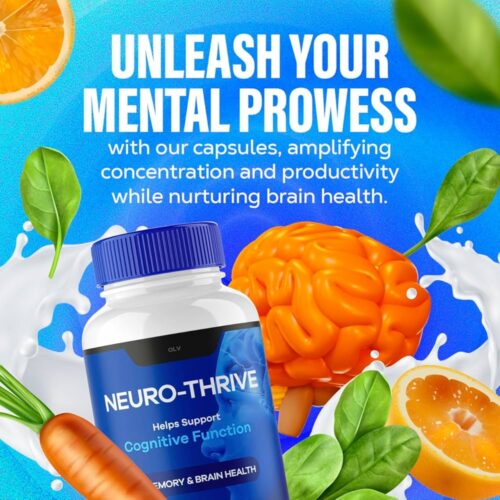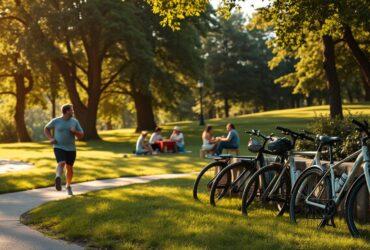As men get older, they often lose muscle and become less flexible. But, with the right steps, staying active and healthy is possible. We think keeping fit is key to feeling good overall, and we’re here to help you.
Staying fit after 40 needs both science and real-world advice. Dr. John Spencer Ellis is a top expert in fitness and wellness. He can help you achieve optimal health and make your life better.
Begin your path to better health with Dr. John Spencer Ellis here on Diet Guru.
Key Takeaways
- Maintaining physical health is crucial for overall well-being.
- Men over 40 face unique physical challenges.
- A combination of scientific knowledge and practical wisdom is necessary for staying fit.
- Dr. John Spencer Ellis is a renowned expert in fitness and wellness.
- Following a guided approach can lead to optimal health.
The Changing Landscape of Physical Health After 40
As we get older, our bodies change a lot. Starting in our 30s, we lose muscle at a rate of 3 to 8 percent each decade. This rate goes up after 60. Also, bone density starts to drop in midlife, making it key to change our exercise and lifestyle.
Hormonal Shifts and Metabolism Changes
After 40, our hormones change a lot, affecting our metabolism. For example, lower testosterone in men can reduce muscle and strength. It’s important to adjust our workouts and diet to keep our bodies healthy.
Muscle Mass Preservation Challenges
Keeping muscle mass after 40 is tough. We naturally lose muscle, so we need to focus on exercise routines and over40 workouts that build strength. This helps keep muscle, boosts metabolism, and supports our health.
By understanding these changes and making lifestyle changes, we can stay healthy and well as we age.
Why Fitness After 40 Matters More Than Ever
For men over 40, regular exercise is key to staying healthy. It helps prevent chronic diseases and keeps the mind sharp. As we age, our bodies change, affecting our health. But, by focusing on fitness, we can fight these changes and live well.
Disease Prevention Benefits
Staying active is vital for avoiding chronic diseases that come with age. Exercise:
- Reduces heart disease risk by boosting heart health
- Lowers blood pressure and improves cholesterol levels
- Makes insulin work better, cutting down type 2 diabetes risk
- Helps keep bones strong, lowering osteoporosis risk
Men over 40 can greatly lower their disease risk with regular exercise. For more on how inflammation affects men over 40, check out this resource.
Mental Health and Cognitive Function Improvements
Exercise is great for more than just the body. It also boosts mental health and brain function. Regular activity:
- Reduces stress and anxiety by releasing happy hormones
- Improves mood and overall happiness
- Boosts brain function, possibly lowering dementia risk
By staying active, men over 40 can enjoy these mental benefits. It makes life more rewarding.
Dr. Ellis’s Approach to Fitness After 40
Dr. Ellis focuses on a complete fitness plan for men over 40. It includes strength, cardio, and flexibility exercises. This plan is based on the latest science and is made for aging athletes.
As men get older, their bodies change in many ways. Hormones shift, metabolism slows, and muscles can lose mass. These changes need to be considered when creating a good fitness plan.
Science-Backed Principles for Aging Athletes
Dr. Ellis’s method is based on several key principles. These are supported by scientific research. They include:
- Incorporating strength training to maintain muscle mass and bone density
- Engaging in regular cardiovascular exercise to support heart health
- Incorporating flexibility exercises to maintain range of motion
By focusing on these areas, men over 40 can lower their risk of chronic diseases. They can also improve their health and keep their physical function.
| Exercise Type | Benefits |
|---|---|
| Strength Training | Maintains muscle mass and bone density |
| Cardiovascular Exercise | Supports heart health and reduces disease risk |
| Flexibility Exercises | Maintains range of motion and reduces injury risk |
Adapting Training Philosophy as You Age
As men age, their training needs to change. They might need to adjust their workouts to fit their physical limits or health issues.
“The key to successful aging lies in a well-structured fitness regimen that adapts to the changing needs of the body.” – Dr. Ellis
By being flexible and adaptable in fitness, men over 40 can keep reaching their health goals. Even as their bodies change, they can stay active and healthy.
Assessing Your Current Fitness Level
To start a successful fitness journey, knowing your current fitness is key. This includes strength, endurance, and flexibility. This first step helps create a fitness plan that meets your needs and goals.
Strength and Endurance Baseline Tests
First, check your muscle strength and endurance. Simple tests include:
- Push-ups to assess upper body strength
- Squats or lunges for lower body strength
- Planks to measure core endurance
These tests show where you might need to work harder.
| Test | Purpose | Initial Assessment |
|---|---|---|
| Push-ups | Upper body strength | Number completed |
| Squats | Lower body strength | Number completed |
| Plank hold | Core endurance | Time held |
Mobility and Flexibility Assessments
Checking your mobility and flexibility is also crucial. Simple tests like touching your toes or leg swings show your range. For a deeper look, try these:
- Shoulder mobility: Arm circles or shoulder rolls
- Hip flexibility: Leg swings or lunges

Knowing your fitness level helps tailor your workouts. This ensures a balanced fitness plan that supports your health and wellness goals.
Setting Realistic Fitness Goals for Your 40s and Beyond
As we hit our 40s, setting the right fitness goals is key. It keeps us motivated and helps us succeed. We need to know what goals to set and how to keep them achievable.
Performance vs. Aesthetic Goals
It’s important to know the difference between performance goals and aesthetic goals. Performance goals are about getting better at physical activities, like running or lifting. Aesthetic goals are about looking good, like getting a certain body shape or weight.
Creating Sustainable Fitness Habits
Building sustainable fitness habits is essential for lasting success. We should create exercise routines that we enjoy and can stick to. For men over 40, a mix of strength training, cardio, and flexibility exercises is important.
| Goal Type | Example | Benefits |
|---|---|---|
| Performance | Running a 5K in under 30 minutes | Improved cardiovascular health, increased endurance |
| Aesthetic | Losing 10 pounds | Improved body composition, enhanced confidence |
Strength Training Fundamentals for Men Over 40
Men over 40 find that strength training boosts their physical and mental health. As we age, our bodies change, affecting muscle mass, bone density, and health. A good strength training program can help, improving our life quality.
The Big Five Compound Exercises
The big five compound exercises are key: squats, deadlifts, bench press, rows, and overhead press. They work many muscles at once, making them efficient for building strength.
Proper Form Modifications for Aging Joints
Our joints may not be as strong with age. It’s important to adjust our form to protect them. For example, a sumo stance in deadlifts eases the lower back. A decline bench press is gentler on the shoulders.
Progressive Overload Strategies
Progressive overload means slowly increasing the weight to challenge muscles and promote growth. For men over 40, this can be done by adding weight, reps, or sets. It’s vital to balance this with rest to avoid injuries.
Isolation Exercises Worth Your Time
Compound exercises are the core of a program, but isolation exercises like bicep curls and tricep extensions also have their place. They help target specific muscles and balance muscle development.
By focusing on these strength training basics, men over 40 can keep their strength, boost their health, and improve their life quality.
Cardiovascular Exercise Strategies
Cardiovascular exercise is key for staying fit, especially in our 40s and beyond. As we age, keeping our heart health up is crucial. Good cardiovascular exercises can boost heart health and fitness for men over 40.
Zone2 Training Benefits
Zone 2 training, or aerobic exercise, is great for heart health. It’s done at a moderate intensity, where you can still talk. This type of training improves heart health, boosts endurance, and helps burn fat.
| Benefits | Description |
|---|---|
| Improved Cardiovascular Health | Enhances heart health and reduces the risk of cardiovascular disease |
| Increased Endurance | Allows for longer periods of physical activity without fatigue |
| Enhanced Fat Burning | Improves the body’s ability to burn fat for energy |
Strategic HIIT Implementation
High-Intensity Interval Training (HIIT) is another great option. It mixes short, intense workouts with rest periods. HIIT is great for men over 40 because it fits various fitness levels. It boosts heart health, burns calories, and improves metabolism.
“The key to successful HIIT is to push yourself to your maximum capacity during the intense intervals, and then allow your body to recover during the rest periods.”
Finding Activities You Actually Enjoy
Finding fun activities is key to sticking with a workout routine. Whether it’s running, cycling, swimming, or group classes, enjoying what you do makes it easier. Men over 40 can explore different exercises to find what they like best, helping them stay committed to fitness.
Flexibility and Mobility: Your Secret Weapons
As we get older, keeping our bodies flexible and mobile is key. For men over 40, doing exercises that boost flexibility and mobility can greatly enhance life quality and sports performance.
5-Minute Daily Mobility Routines
Starting a daily mobility routine is easy and works well. Try a 5-minute routine with dynamic stretches like leg swings, arm circles, and torso twists. These moves increase blood flow and cut down on muscle tightness.
For example, start with leg swings. Stand with your feet apart and swing one leg forward and backward for 30 seconds. Then switch to the other leg.

Joint-Specific Mobility Work
Targeting specific joints like hips, shoulders, and the thoracic spine is important. Exercises like hip circles, shoulder rotations, and thoracic spine twists can keep or boost range of motion. For instance, hip circles can be done by standing with feet together and hands on hips. Move your hips in a big circle first clockwise, then counterclockwise.
This helps reduce stiffness and boosts overall mobility. Adding these exercises to your daily routine can improve your flexibility and mobility. This leads to better health and fitness. Regular mobility work also helps prevent injuries and boosts performance in other activities.
Creating a Balanced Weekly Workout Schedule
Men over 40 should focus on a balanced workout plan. It should include strength training, cardio, and rest days. A good plan keeps you healthy, boosts your mood, and lowers disease risk.
A balanced schedule mixes exercises for different muscle groups and fitness areas. Here are some examples:
Sample 3-Day Full Body Split
A 3-day full body split is great for those with tight schedules. It works out all major muscles three times a week. For example:
- Day 1: Squats, deadlifts, bench press, rows, and lunges
- Day 2: Leg press, leg curls, chest press, lateral raises, and tricep extensions
- Day 3: Deadlifts, rows, shoulder press, bicep curls, and tricep dips
Sample 4-Day Upper/Lower Split
A 4-day upper/lower split focuses on specific muscles. It divides workouts into upper and lower body days:
- Day 1 (Upper Body): Bench press, rows, shoulder press, bicep curls, and tricep extensions
- Day 2 (Lower Body): Squats, deadlifts, lunges, leg press, and calf raises
- Day 3 (Upper Body): Chest press, lateral raises, shoulder press, bicep curls, and tricep dips
- Day 4 (Lower Body): Deadlifts, leg curls, leg extensions, calf raises, and glute bridges
Incorporating Active Recovery Days
Active recovery days are key. They include yoga, stretching, or light cardio. These help with blood flow, muscle soreness, and recovery. Include at least one or two of these days in your schedule.
Adding a balanced workout schedule to your life boosts fitness and health. Listen to your body and adjust your routine to avoid injuries and plateaus.
Nutrition Strategies to Support Fitness After 40
Men over 40 should eat a balanced diet to support their fitness goals and health. As we get older, our diet needs change. A good nutrition plan can help grow muscle, aid in recovery, and improve health.
Protein Timing and Requirements
Protein is key for men over 40 to keep muscle and strength up. Aim for 1.2-1.6 grams of protein per kilogram of body weight each day. Spread it out over 3-5 main meals. Also, eat protein within an hour after working out to help muscles recover and grow.
Anti-inflammatory Diet Principles
An anti-inflammatory diet is important to reduce stress and inflammation. Focus on whole foods like fruits, veggies, whole grains, lean proteins, and healthy fats. Omega-3 rich foods like salmon and walnuts are great. Try to avoid pro-inflammatory foods like processed meats and sugary snacks.
Strategic Carbohydrate Consumption
Carbs are vital for energy during workouts and daily life. Choose complex carbs like whole grains, fruits, and veggies for sustained energy and fiber. Eating carbs around workouts can improve performance and recovery.
Supplements That Actually Work
While a balanced diet is key, some supplements can help too. Consider protein powder, creatine, and omega-3 supplements for muscle growth, strength, and health. Always talk to a healthcare professional before adding new supplements.
| Nutrient | Recommended Daily Intake | Benefits |
|---|---|---|
| Protein | 1.2-1.6 grams/kg body weight | Supports muscle growth and recovery |
| Omega-3 Fatty Acids | 250-500 mg | Reduces inflammation and supports heart health |
| Complex Carbohydrates | 2-3 grams/kg body weight | Provides sustained energy and fiber |
For more info on nutrition and fitness, check out our resource on healthy eating. By eating well, exercising regularly, and living healthily, men over 40 can reach their fitness goals and stay healthy.
Recovery and Injury Prevention
As we get older, recovery and injury prevention become more important. Our bodies change with age, making it harder to recover from workouts and increasing injury risk. It’s key to find ways to stay healthy and meet our fitness goals.
Sleep Optimization Techniques
Sleep is vital for recovery. To improve sleep, we need a regular sleep schedule, a quiet sleep space, and no stimulants before bed. Here are some tips:
- Maintain a dark, quiet sleep area
- Stay away from screens for at least an hour before bed
- Don’t have caffeine or big meals close to bedtime
Stress Management Strategies
Too much stress can hurt recovery and raise injury risk. Good stress management includes:
- Meditation and mindfulness
- Deep breathing exercises
- Relaxing activities like reading or listening to music
When to Push vs. When to Rest
Knowing when to keep going and when to rest is key. We should:
- Keep going with minor discomfort during workouts
- Rest if we feel sharp pain or are very tired
By balancing workouts with rest and listening to our bodies, we can keep a good fitness routine.
Conclusion: Embracing Lifelong Fitness
As we get older, our bodies change a lot. This can affect our health and fitness. Making lifestyle changes that focus on staying active is key, especially for men over 40.
Adding strength training, cardio, and flexibility exercises to our routine helps fight aging. Dr. John Spencer Ellis’s fitness plan for men over 40 is a great guide.
We suggest you begin by checking your current fitness level. Then, set achievable goals and plan a balanced workout schedule. Focusing on men’s fitness and lifelong health can greatly improve your life. It boosts your physical health and overall well-being, including sexual health.










